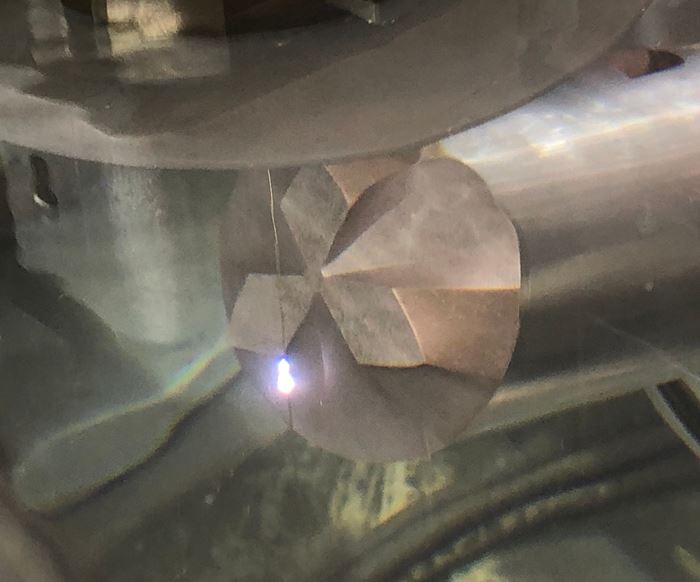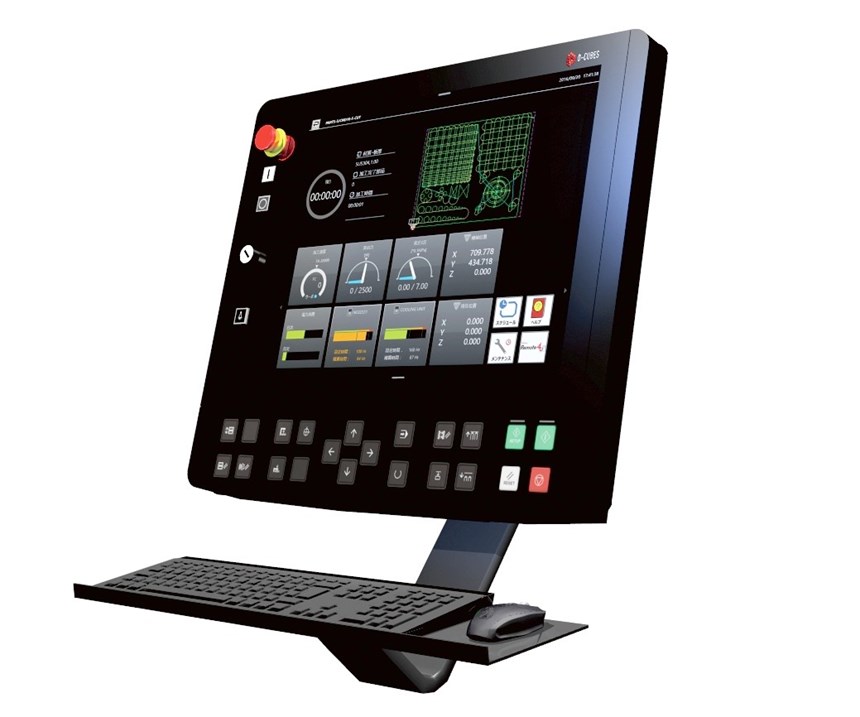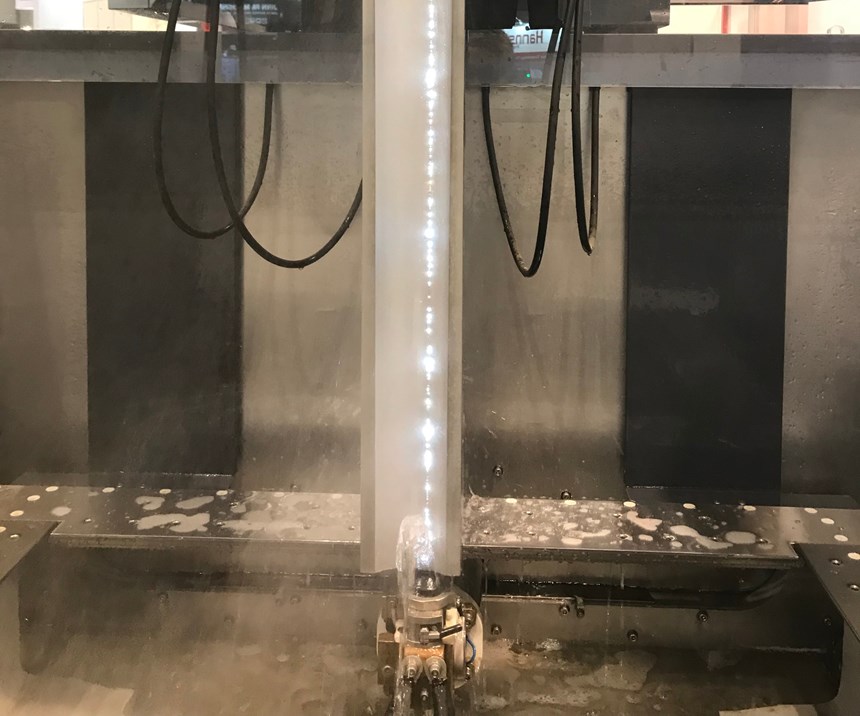During wire electrical discharge machining (EDM) operations, effective spark monitoring is essential to ensure process control, maximize wire life and prevent wire breakage. In working to improve the capabilities of its wire machines to best monitor the state of the electrical discharges between the wire and workpiece, Mitsubishi EDM ran into an unexpected problem: The electrical signals feeding back to the control were too slow for the monitoring system to make timely, necessary adjustments to on/off time and current on its new machines to maintain consistent sparks.
One design goal for those new machines was to reduce wire wear. “Previous generations of the company’s machines had stronger sparks discharged at a lower frequency, which can be hard on the wire because of the relatively high voltage required,” says Mike Bystrek, applications manager for MC Machinery, a subsidiary of Mitsubishi Corp. that sells and services Mitsubishi EDM units and other equipment. “The new machines can produce a higher number sparks per second with less intensity, which means we needed to improve our monitoring to differentiate between ‘good’ sparks and short circuits to maintain a uniform curve along the wire.” The “curve” Mr. Bystrek is referring to is the combined shape of the electrical arcs that form between the wire electrode and the workpiece. A wire produces more uniform electrical arcs when there are fewer short circuits that would increase wire wear and possibly create surface defects. To maintain uniform electrical arcs, the company needed to improve its spark-monitoring capabilities, but found that its older controls were not able to keep up with the pace of the new machines.
The crux of the challenge was simple: Electrical discharge machining relies on, well, electrical discharges. During operation, the spark travels from the wire electrode to the workpiece at roughly the same speed as the electrical signals moving through the wires of the monitoring system. However, the distance between the wire electrode and workpiece is far shorter than the distance between the spark and the control. This means that the control is processing out-of-date information because it receives the electrical signals well after each spark has completed, diminishing the machine’s ability to maintain uniform sparks. To solve this problem, the company developed the M800 series control, which uses fiber-optic cables to increase data processing speed for its wire EDM units.
The solution is simple, but effective. While electrical wires are limited by the speed of electricity, fiber-optic cables send data through light pulses that travel roughly 100 times faster than electrons through wires. By upgrading to “light speed,” the M800 is able to measure 128,000 sparks per second, a fourfold improvement over the company’s older controls. This enables the EDM unit to better maintain uniform spark output, reducing wear on the wire and decreasing the voltage required. Less wear on the wire translates to a slower spool and longer wire life, a cost saver for the user. According to the company, the new series of M800-equipped EDM units reduce wire usage by as much as 60 percent compared to previous models.
The M800 comes standard with the MV1200R, MV2400R, MV1200S and MV2400S series of wire EDM units. The control’s new screen design puts spark monitoring information alongside machine progress and status, emphasizing its importance. In addition to fiber-optic signal transmission, the company has added other features to the M800, which include:
- Legacy mode: This capability enables users to switch operating interfaces from the M800 to the M700 interface so that users who are familiar and comfortable with the older control can benefit from the M800’s features without having to learn a new interface.
- Onboard programming macros: This function is said to enable users to more easily program common shapes by selecting the desired shape and inputing its dimensions.
- Program suspension: Operators can pause a job when another more urgent job must be processed and pick up from that paused state once completed.
- Operational checklists: Setup personnel are said to be able to more easily set machining tasks in a specific order, and they have the option to gate tasks so that they must be completed in that exact order.
Related Content
Inside an Amish-Owned Family Machine Shop
Modern Machine Shop took an exclusive behind-the-scenes tour of an Amish-owned machine shop, where advanced machining technologies work alongside old-world traditions.
Read MoreWatchmaking: A Machinist’s View
Old-world craftsmanship combines with precision machining on a vertical machining center and Swiss-type lathe to produce some of the only U.S.-made mechanical wristwatch movements.
Read MoreThreading On A Lathe
The right choices in tooling and technique can optimize the thread turning process.
Read MoreA New Milling 101: Milling Forces and Formulas
The forces involved in the milling process can be quantified, thus allowing mathematical tools to predict and control these forces. Formulas for calculating these forces accurately make it possible to optimize the quality of milling operations.
Read MoreRead Next
The Cut Scene: The Finer Details of Large-Format Machining
Small details and features can have an outsized impact on large parts, such as Barbco’s collapsible utility drill head.
Read More3 Mistakes That Cause CNC Programs to Fail
Despite enhancements to manufacturing technology, there are still issues today that can cause programs to fail. These failures can cause lost time, scrapped parts, damaged machines and even injured operators.
Read MoreObscure CNC Features That Can Help (or Hurt) You
You cannot begin to take advantage of an available feature if you do not know it exists. Conversely, you will not know how to avoid CNC features that may be detrimental to your process.
Read More

















.png;maxWidth=300;quality=90)












